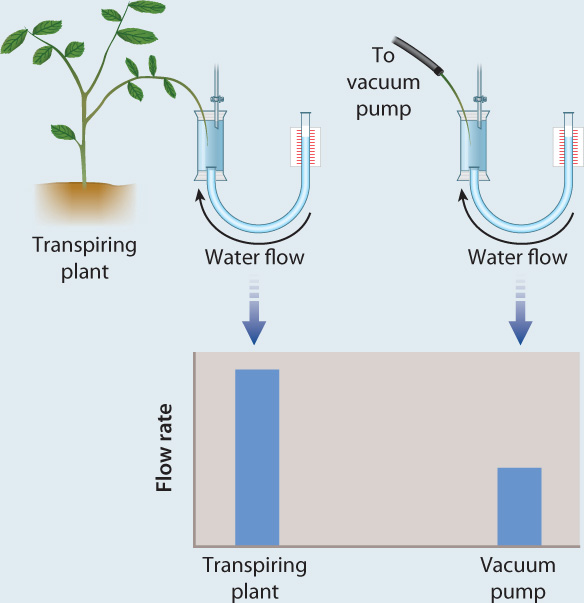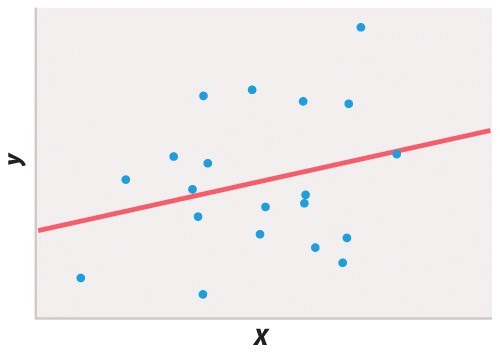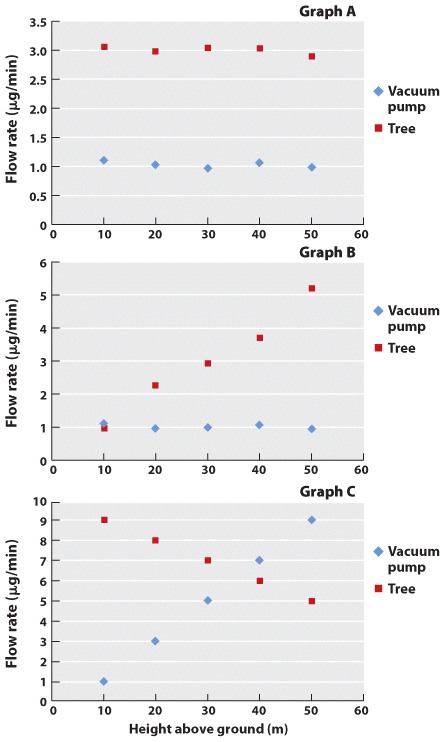Chapter 1. Working With Data 29.12
Working with Data: HOW DO WE KNOW? Fig. 29.12
Fig. 29.12 describes Otto Renner’s experiment showing that leaves exert stronger forces on water being pulled from the soil than a vacuum pump could. Answer the questions after the figure to practice interpreting data and understanding experimental design. These questions refer to concepts that are explained in the following three brief data analysis primers from a set of four available on LaunchPad:
- Experimental Design
- Data and Data Presentation
- Statistics
You can find these primers by clicking on the button labeled “Resources” in the menu at the upper right on your main LaunchPad page. Within the following questions, click on “Primer Section” to read the relevant section from these primers. Click on the button labeled “Key Terms” to see pop-up definitions of boldfaced terms.
HOW DO WE KNOW?
FIG. 29.12: How large are the forces that allow leaves to pull water from the soil?
BACKGROUND The idea that water is pulled through the plant by forces generated in leaves was first suggested in 1895. However, without a way to measure these forces, there was no way to know how large they were.
HYPOTHESIS In 1912, German physiologist Otto Renner hypothesized that leaves are able to exert stronger suctions than could be generated with a vacuum pump.
EXPERIMENT Renner measured the rate at which water flowed from a reservoir into the cut tip of a branch of a transpiring plant. He next cut off about 10 cm of the branch and attached a vacuum pump in place of the transpiring plant. He then compared the flow rate through the branch when attached to the transpiring plant with the flow rate generated by the vacuum pump.
RESULTS Renner found that the flow rates generated by transpiring plants were two to nine times greater than the flow rates generated by the vacuum pump.

CONCLUSION A transpiring plant pulls water through a branch faster than a vacuum pump. Therefore, the pulling force generated by a transpiring plant must be greater than that of a vacuum pump. Because vacuum pumps create suctions by reducing the pressure in the air, the maximum suction that a vacuum pump can generate is 1 atmosphere. Thus, the maximum height that one can lift water using a vacuum pump is 10 m (33 feet). The forces that pull water through plants have no comparable limit because they are generated within the hydrated cell wall. This is why plants can pull water from dry soils and why they can grow to more than 100 m in height.
FOLLOW-UP WORK In 1965, Per Fredrick Scholander developed a pressurization technique that uses reverse osmosis to measure the magnitude of the suctions exerted by leaves of intact plants. He used this technique to show that the leaves at the top of a Douglas fir tree 100 m tall exert greater pulling forces than do leaves closer to the ground.
SOURCE Renner, O. 1925. “Zum Nachweis negativer Drucke im Gefässwasser bewurzeler Holzgewachse.” Flora 118/119:402-408.; Scholander, P. F., H. T. Hammel, E. D. Bradstreet, and E. A. Hemmingson. 1965. “Sap Pressure in Vascular Plants.” Science148:339–346.
Question
In the original paper published by Otto Renner, all of the flow rates measured into intact plants were greater than what could be produced by a vacuum pump pulling water through the same branch segment. Under what conditions would you predict that Renner would have measured a lower flow rate into the intact plant than subsequently measured using the vacuum pump?
| A. |
| B. |
| C. |
| D. |

